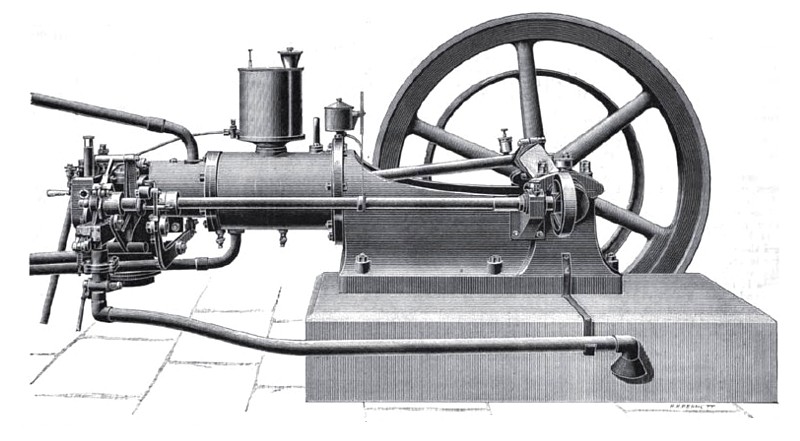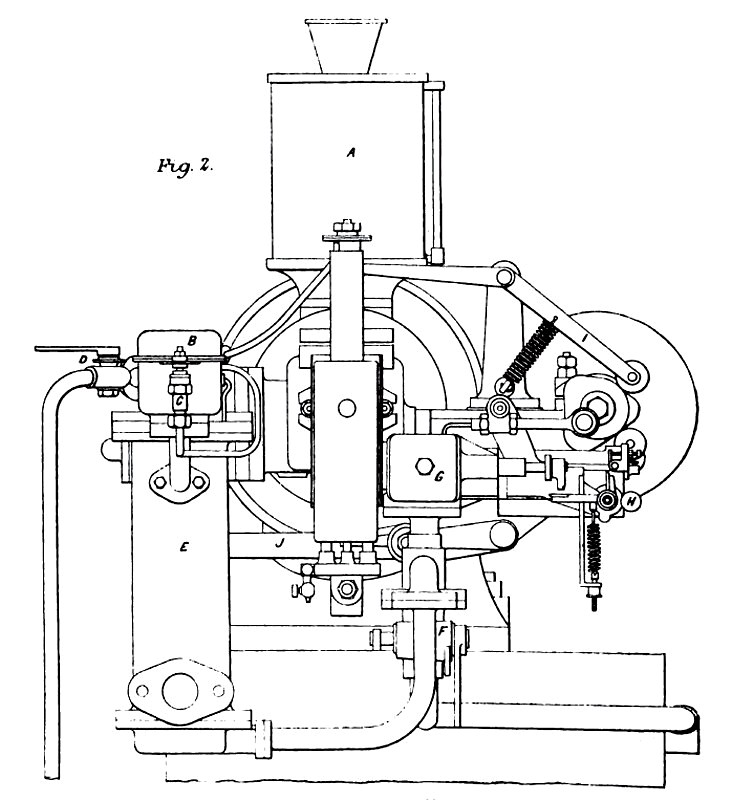|
Title: |
1893 Article-Robert Stephenson & Co., Ltd., "Rocket" Petroleum Motor |
|
Source: |
Engineering Magazine, V55, 23 Jun 1893, pgs 882 & 864 |
|
Insert Date: |
6/19/2012 12:21:37 PM |
|
At this Show we find for the first time Messrs. Robert Stephenson and Co., Newcastle-upon-Tyne, who remind us of an event in their early history by naming their engine the "Rocket." An engraving of this engine is to be found on page 864, where it will be seen that it follows the usual type of construction; the introduction, compression, explosion, and exhaust of the charge are arranged on the well-known Otto cycle, which seems to be difficult to improve upon. The feature of novelty lies in the compression being omitted in those cycles in which no explosive charge is admitted. As is general in such engines, the governor cuts off the supply of oil vapour as soon as the normal speed is exceeded; at the same moment a lever shifts the valve cam, and on the return stroke there is no compression. Although there is no theoretical gain, it tends to make the engine run more regularly, as the compression and subsequent expansion of the air tend first to slow and then to accelerate the speed of rotation. There are no pumps in this engine, the vacuum caused by the movement of the piston in the first stroke of the cycle serving to spray the oil. A day's supply of oil is stored in the container A; it flows by gravity to a receiver B, whence it is passed through a regulator C to the vaporizer E. It is then drawn out, as already stated, by the vacuum in the cylinder, together with an air supply through the regulating cock D. The vaporizer contains tubes around which the exhaust gases circulate; in it the oil spray is heated till it becomes vapour, when it is ready to be used in the cylinder. Here it is mixed with air drawn through the regulating cock F, G being the admission valve, H the governor, I the ignition valve lever, and J the exhaust valve lever. We have said that the governor cuts off the supply of combustible charge, but it does not do it in the ordinary method. Usually the charge is admitted when a hit-and-miss governor opens the valve; in this case the valve lifts automatically whenever the piston makes its drawing-in stroke, except it be positively held shut by the governor. This is a modification of the pendulum type. It is raised positively at each cycle by a fixed projection, and then set free to be depressed by an adjustable spring. When the engine is running fast, the governor arm does not fall fast enough to miss the valve spindle, while at normal speed it just escapes the latter. By tightening the spring the speed of rotation can be varied through a wide range. There are no pumps whatever; the delivery of the oil is regulated by a float. |
|
 1893 Article-Robert Stephenson & Co., Ltd., "Rocket" Petroleum Motor
1893 Article-Robert Stephenson & Co., Ltd., "Rocket" Petroleum Motor
 1893 Article-Robert Stephenson & Co., Ltd., "Rocket" Petroleum Motor (end view)
1893 Article-Robert Stephenson & Co., Ltd., "Rocket" Petroleum Motor (end view)
|
|